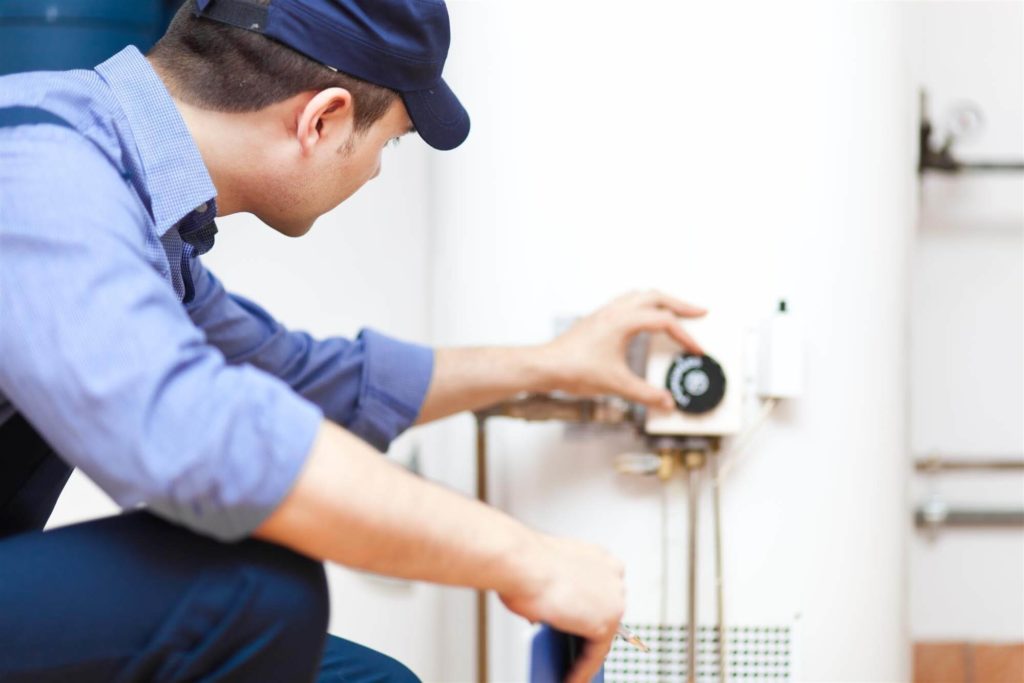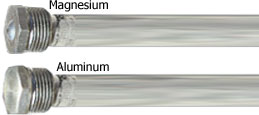

Why don't water heaters last as long as they used to?
Learn why today’s water heaters don’t last nearly as long as those from a generation ago and the steps you can take to extend your hot water heater's life.

the mixing valve just downstream from the hot water outlet of a heater is in place to reduce temperature from 140/150 degrees in an application/arrangement intent on killing Legionella, to the otherwise prescribed 120 degree temp, by diluting the hot water immediately upon leaving the heater.
the mixing valve just downstream from the hot water outlet of a heater is in place to reduce temperature from 140/150 degrees in an application/arrangement intent on killing Legionella, to the otherwise prescribed 120 degree temp, by diluting the hot water immediately upon leaving the heater.
I saw that, but the main attraction of the mixing valve to me is that it would increase the amount of hot water available. Basically with the mixing valve you turn up the heater to a higher temp and then it mixes it with cold to get it back down to 120. So,as a result, you get a greater volume of 120 degree water.
yeah, that is true, but that’s additional stress to the machine.(greater temp/ pressure of its contents)
ask the tech about life expectancy of respective heaters set at 120 versus 140/150
I honestly dunno lol
Finally got the internal bits of my chimney fixed. They took out the metal liner and the old original clay liner and put in a new liner. Also moved the damper from just above the firebox to the top of the chimney. And finally reshaped the firebox itself to help it draft properly.
$5.2k all in which after checking around seemed about right for this market.
Enjoying our first fire in over 10 years tonight and it’s pretty nice.
Still need to get the outside of the chimney sealed and repair the damage where the squirrels were eating the new lead flashing we just installed with our new roof a few years ago.
One more thing.
The installer says that an expansion tank is needed. I don’t think there is one now. Is that just related to building codes or is there some way to determine if it is needed.
yeah, it’s a code requirement.
the expansion tank itself costs like 50$, with an additional fitting or 2 to pipe it into the configuration. so you’re looking at an extra 200$ with mark-up and labor approximately
yeah, it’s a code requirement.
the expansion tank itself costs like 50$, with an additional fitting or 2 to pipe it into the configuration. so you’re looking at an extra 200$ with mark-up and labor approximately
Thanks.
they are fine, plumbing supply houses all over KC keep them in stock. but like I said, give 'em a call! google their tech support number.
So I called the AO Smith tech support and asked about the heaters. Apparently they are identical. There is absolutely no difference. All you are paying for is the longer warranty. The cheaper one has 6 yrs and the more expensive one has 10 yrs.
I’ll ask the installer the same question on Monday to confirm (I guess even if he says something else, I’m still going to believe the AO smith rep). But it looks like if that’s the only difference, I’ll take the cheaper one. It’s a 25% markup for an extra 4 yrs. Can’t possibly be +EV.
they are fine, plumbing supply houses all over KC keep them in stock. but like I said, give 'em a call! google their tech support number.
So, here’s an interesting development. I emailed the installer about the difference between between those two heaters and he replied saying that there actually was a difference:
On the one with the 6 yr warranty, the anode rod is aluminum coated stainless steel.
On the one with the 10 yr warranty, the anode rod is magnesium coated stainless steel.
It seems weird that when I called the manufacturer, they didn’t mention this. Maybe I got a bad rep on the phone.
Anyway, do you have any thoughts on how big a deal that is.
Speaking of water heaters.
Am I supposed to replace my water heater at some certain interval? I think mine is approaching 15 years old. If it goes it could flood my basement, correct?
I found this, and it’s good and accurate. applies to both prior posts!
 Charlotte Plumber | Residential Plumbing | Plumbing Company Charlotte NC – 18 Mar 14
Charlotte Plumber | Residential Plumbing | Plumbing Company Charlotte NC – 18 Mar 14

Learn why today’s water heaters don’t last nearly as long as those from a generation ago and the steps you can take to extend your hot water heater's life.
bout 6 paragraphs of reading, doesn’t take long
nah, they don’t fail in a catastrophic manner… in my experience, they develop a small leak, and can soldier-on indefinitely in that compromised state.
If near a floor drain, the water often finds its way to the drain. Especially if the concrete workers were good when the house was built, the floor will pitch visibly or imperceptibly to the drain. If the water does puddle and pool and threaten a finished basement, expedited replacement is the play
Thanks. I had no drain in my basement but I put a sump in about 10 years ago. But the floor does not slope that way it’s just flat. Maybe I need some berms or something to force any water leaks to head for the sump.
I read that article - thanks. I’ve never once flushed the heater tank nor have I inspected or changed the anode rod. Woops. We have very soft water, wonder if that has helped it last despite no help from me with proper maintenance?
berms lol
just do what that article recommends, or be resigned to replacing it every so often.
You could have a floor drain installed, similar to having the sump installed
actually, if the sump pit is ten feet from the heater, you could have a 10’ by 18" section of basement floor removed, then hand-dug, so you could install a floor drain that empties into the sump pit.
You think it’s worth having it drained and the anode rod replaced? Or after 15 years just go for a replacement and actually do PM this time?
I’m paranoid because half my basement is finished (and that flooded once already due to heavy rains and a water main break) and I’m putting a wine cellar in part of the other half.
sure
my folks heater is 30-years-old
I’ve never drained it or replaced the anode(which makes me question what that article says about quality being maintained throughout the decades)
have a tech out. see if they offer free estimates. anode replacement is, I’m confident, a rarely even attempted preventive measure. watch the tech for tells, immediately upon asking him about replacing the anode. It’s like foreign territory, and his poker face may reveal discomfort errr
Ahh ok so I’m not the only one that doesn’t do any of that shit. The article made it seem necessary.
this is the type of port, into which the anode travels, then ultimately connects via a male/ female thread relationship
if it has sat undisturbed for close to 2 decades, the 2 counterparts may be resistant to disassembly. that’s 1 of the things where the tech’s experience will come into play
the fitting similar to the one below is welded to the inner tank


this is the type of port, into which the anode travels, then ultimately connects via a male/ female thread relationship
if it has sat undisturbed for close to 2 decades, the 2 counterparts may be resistant to disassembly. that’s 1 of the things where the tech’s experience will come into play
the fitting similar to the one below is welded to the inner tank
Have you every replaced one yourself?
Seems weird that it’s such a rare operation.
Reading all of these things on manufacturers websites makes it seems like it’s damn near mandatory to replace them every 3-5 yrs.
I also did read one source that says if you wait too long the corrosion will make the old one hard to get out, which sounds like what you were suggesting.